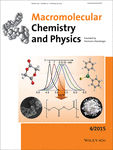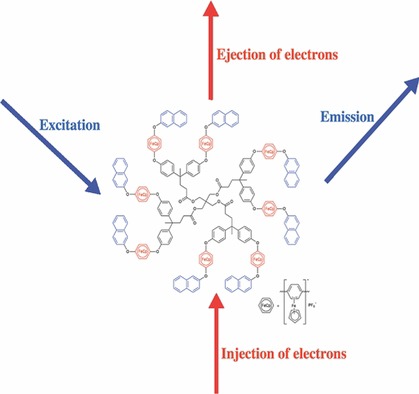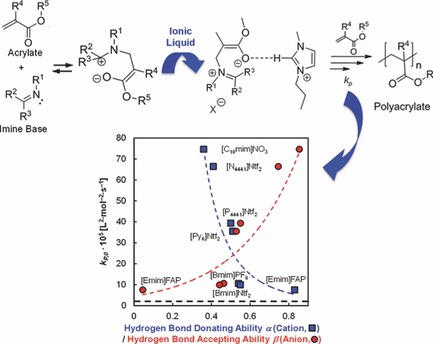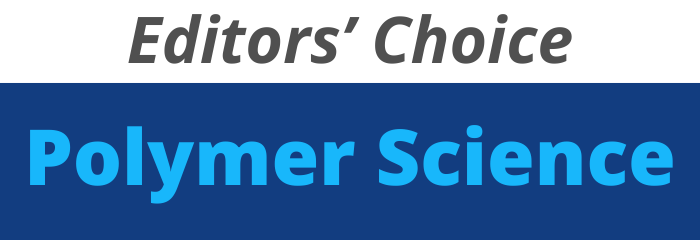Journal list menu
Export Citations
Download PDFs
Cover Picture
Macromol. Chem. Phys. 4/2015
- Page: 353
- First Published: 13 February 2015
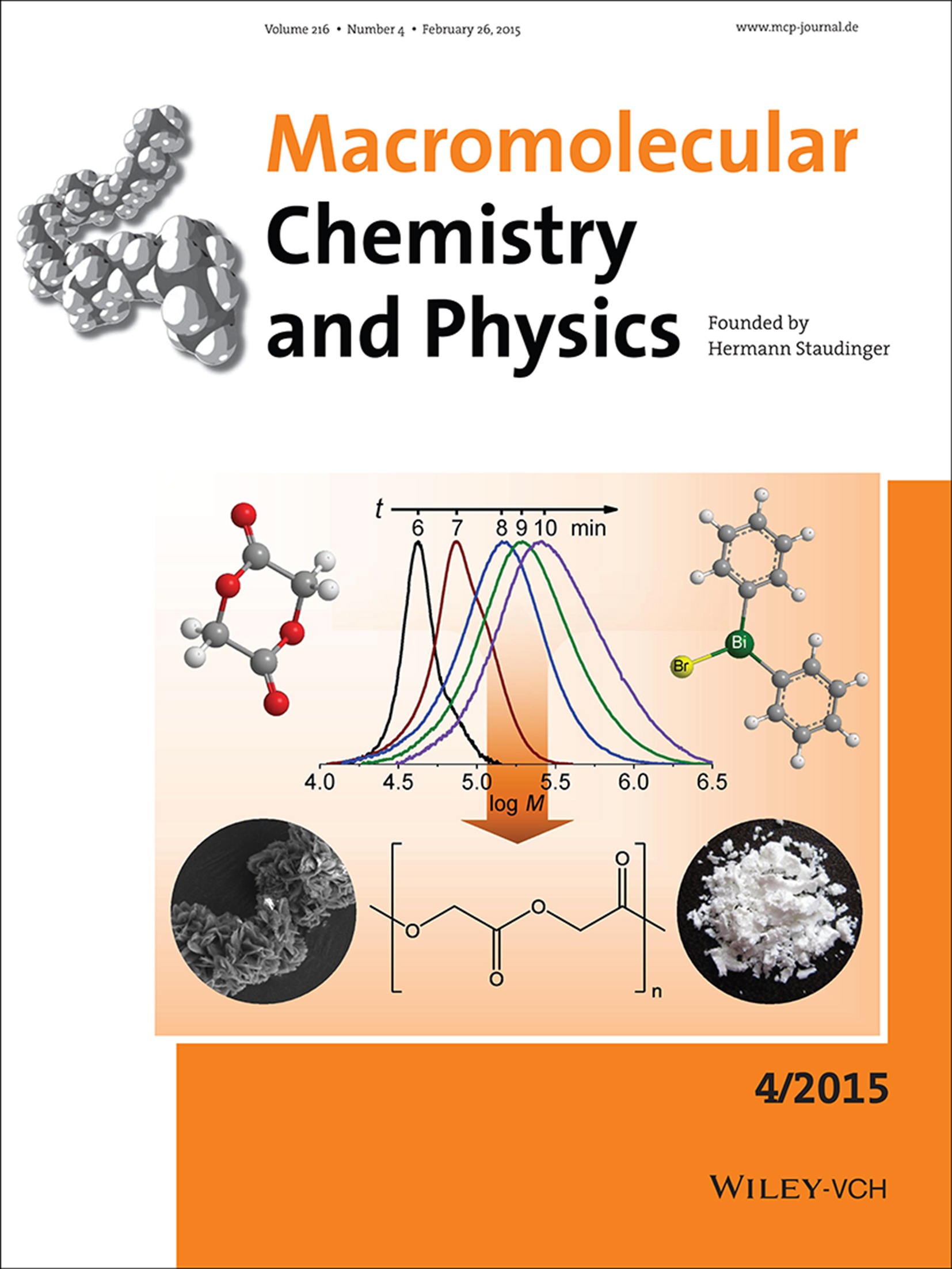
Front Cover: Polyglycolide of high molecular weight is synthesized by ring-opening polymerization of diglycolide in bulk, using a bismuth catalyst. The reactions are fast, leading to full conversion in around 10 minutes, depending on reaction temperature and catalyst concentration. The product is obtained as a white material that does not show any signs of thermal decomposition, and melting temperature as well as crystallinity are independent of molecular weight. Further details can be found in the article by Y. Lu, C. Schmidt, and S. Beuermann* on page 395.
Back Cover
Macromol. Chem. Phys. 4/2015
- Page: 468
- First Published: 13 February 2015
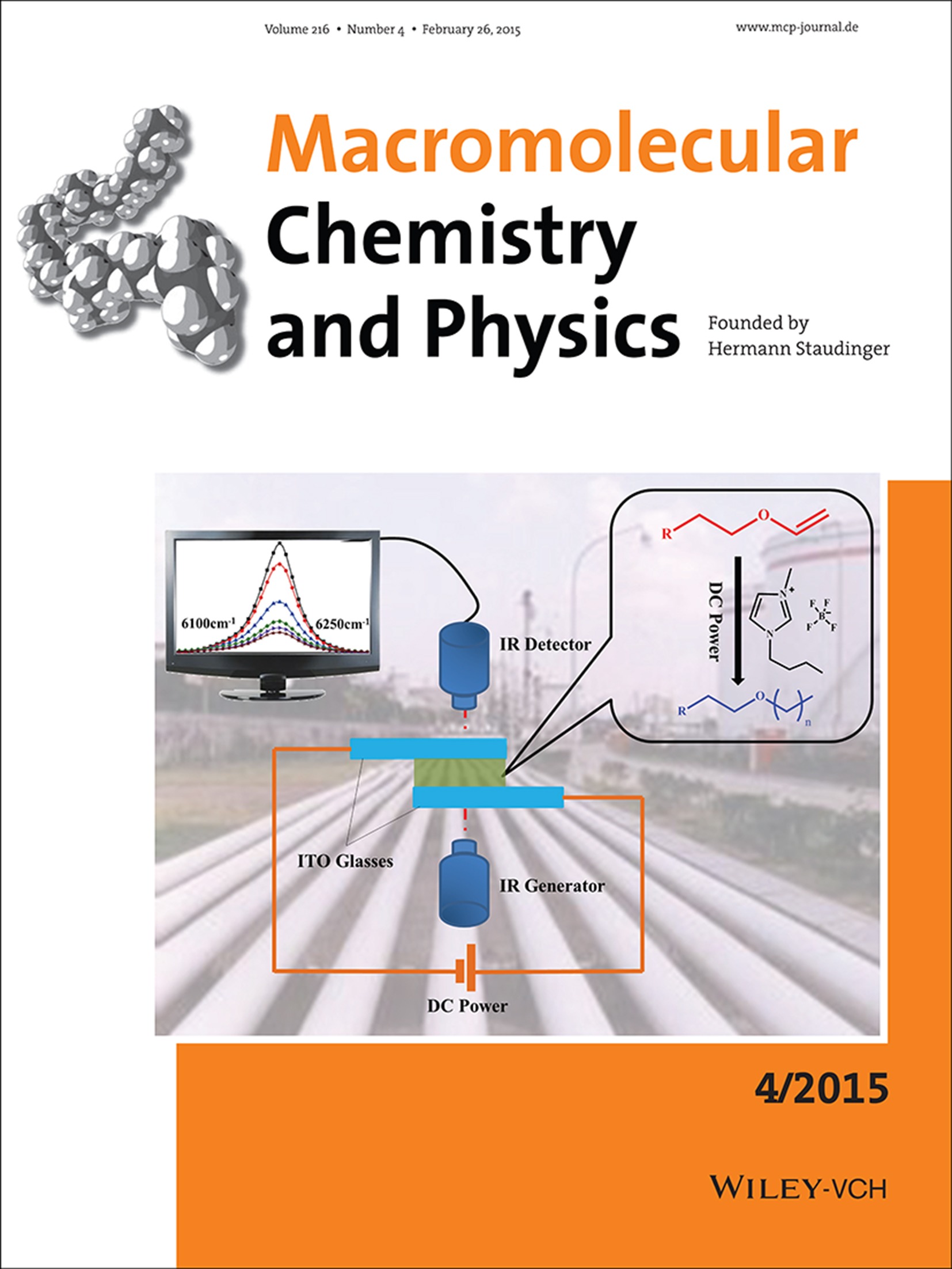
Back Cover: Ionic liquids have been widely successful in many applications; here, 1-butyl-3-methylimidazolium tetrafluoroborate is demonstrated to be an effective initiator for electro-induced polymerization of vinyl ethers. This reaction was studied by the versatile technique Fourier-transform near-infrared spectroscopy, offering advantages over other, more complicated and more time-consuming methods. Using ionic liquids as electro-polymerization initiators has potential applications in the development of anti-corrosion coatings for metal pipes. Further details can be found in the article by F. Yang, J. L. Yang, K. J. Zheng, J. W. Stansbury, and J. Nie* on page 380.
Masthead
Contents
Contents: Macromol. Chem. Phys. 4/2015
- Pages: 355-358
- First Published: 13 February 2015
Talents and Trends
Polymers and Ionic Liquids: A Successful Wedding
- Pages: 359-368
- First Published: 19 December 2014
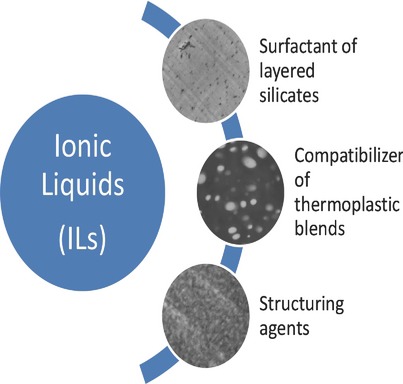
Different pathways for development of nanostructured and advanced materials are summarized, based on the use of ionic liquids (ILs) as multifunctional agents of polymer matrices. The true potential of ILs in the design of new polymeric materials with unprecedented mechanical performance, thermal stability, and barrier properties is highlighted.
Full Papers
Toward a New Family of Bifunctional Organoiron Dendrimers: Facile Synthesis, Redox, and Photophysical Fingerprints
- Pages: 369-379
- First Published: 03 December 2014
Electro-induced Cationic Polymerization of Vinyl Ethers by Using Ionic Liquid 1-Butyl-3-methylimidazolium Tetrafluoroborate as Initiator
- Pages: 380-385
- First Published: 03 December 2014
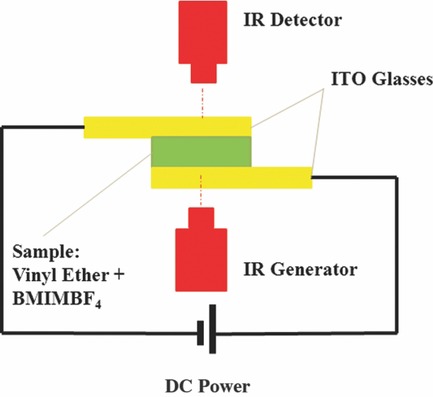
The ionic liquid BMIMBF4 is found to be an efficient initiator for electro-induced cationic polymerization of vinyl ethers. Indium tin oxide (ITO) conductive glasses, which allow transmission in near-infrared spectroscopy, are used for investigating the kinetics of the polymerization. The mechanism of the Lewis acid being formed by a proton being combined through electrolysis of a trace amount of water is postulated.
Kinetic Study on the Catalytic Effect of Ionic Liquids on the Polymerization of Methyl Methacrylate Co-initiated by Imine Bases
- Pages: 386-394
- First Published: 03 December 2014
Fast Synthesis of High-Molecular-Weight Polyglycolide Using Diphenyl Bismuth Bromide as Catalyst
- Pages: 395-399
- First Published: 04 December 2014
Comparison of Particle Size Techniques to Investigate Secondary Nucleation in HEMA-Rich Latexes
- Pages: 400-416
- First Published: 02 January 2015
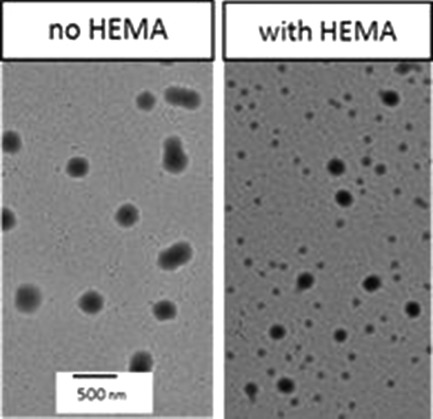
The presence and evaluation of secondary nucleation is reported in 2-hydroxyethyl methacrylate (HEMA-) rich latex, synthesized via a semibatch emulsion polymerization process. 20 mol% HEMA in monomer composition is found to yield a high number of secondary particles, which can be detected by transmission electron microscopy, atomic force microscopy, or ultrasound acoustic attenuation spectroscopy.
PEGylated Metalloporphyrin Nanoparticles as a Promising Catalyst for the Heterogeneous Oxidation of Cyclohexene in Water
- Pages: 417-426
- First Published: 15 December 2014
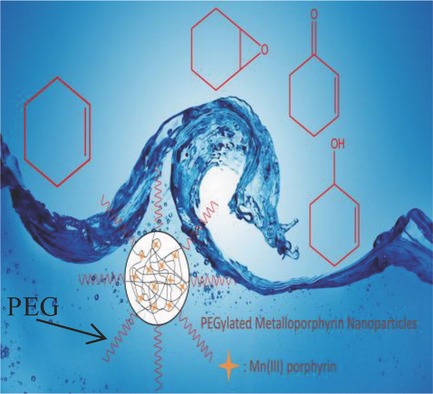
Metalloporphyrins are extensively utilized as biomimetic cytochrome P450 models for catalytic oxidation. However, most metalloporphyrins are hydrophobic. PEGylated-metalloporphyrin nanoparticles are prepared via a combination of controlled radical polymerization, reactive ester-amine reaction, and in situ self-assembly and “click” cross-linking. The resulting PEGylated-metalloporphyrin nanoparticles in water exhibit a higher catalytic activity than the dissolved metalloporphyrin in organic solvent.
Synthesis and Evaluation of Symmetrically PEG-Decorated Triglycerides of Fatty Acid as Drug-Encapsulating Agents
- Pages: 427-438
- First Published: 03 December 2014
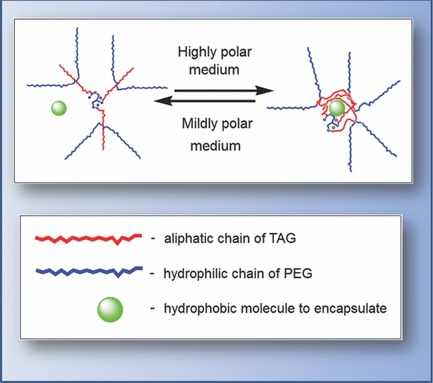
New symmetrically poly(ethylene glycol) (PEG)-decorated triglycerides of fatty acid (TAG) are synthesized and proposed as drug-encapsulation systems. The TAG structure is modified by grafting of PEG chains of different lengths (1000, 550, and 220 Da). MTT assay on the murine macrophage shows the absence of cytotoxic effects. Encapsulation of itraconazole is carried out. Antifungal activity is studied on Candida albicans cells.
Bioinspired Nanotubes from Self-Assembly of a Linear l,d-Oligopeptide-Poly(ethylene glycol) Conjugate
- Pages: 439-449
- First Published: 22 December 2014
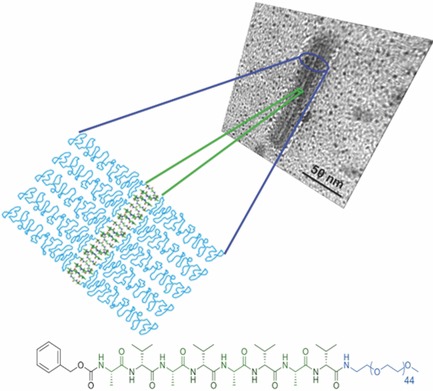
A new nanomaterial is obtained by end-linking a poly(ethylene glycol) with a linear octapeptide with a regular alternating enantiomeric sequence. The hybrid conjugate self-assembles in water, forming well-defined nanorods having core/shell morphology, in which the hydrophobic peptide single-channel core is embedded in high density poly(ethylene glycol) blocks.
Humid Bonding with a Water-Soluble Adhesive Inspired by Mussels and Sandcastle Worms
- Pages: 450-459
- First Published: 03 December 2014
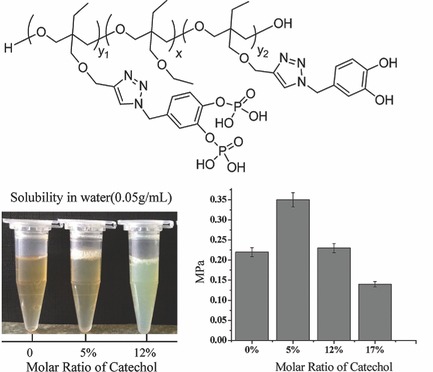
Inspired by mussels and sandcastle worms, catechol and bis-phosphoric acid groups are simultaneously grafted onto polyoxetane by a click reaction to obtain water-soluble adhesives, which are used for humid bonding. Not only the catechol, but also the bis-phosphoric acid groups interact with Fe3+, which accounts for the improved adhesion performance in humid conditions.
Thermoresponsive Gold Nanoparticles with Positive UCST-Type Thermoresponsivity
- Pages: 460-465
- First Published: 18 December 2014
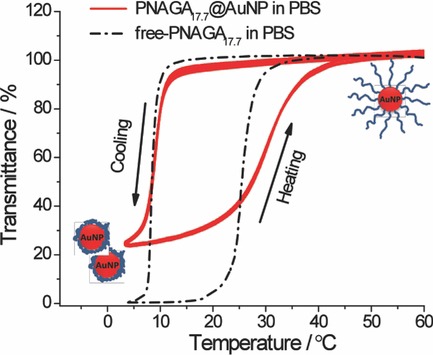
A simple strategy for preparing thermoresponsive gold nanoparticles (AuNPs) is presented, showing positive UCST-type thermoresponsivity by grafting trithiocarbonate chain-end-functionalized poly(N-acryloylglycinamide) onto the AuNP surface in phosphate buffered saline. The UCST-type phase transition is reversible for many cycles. Reversible control of the phase transition is proved by turbidity measurements and UV–vis spectroscopy, as well as by transmission electron microscopy.




